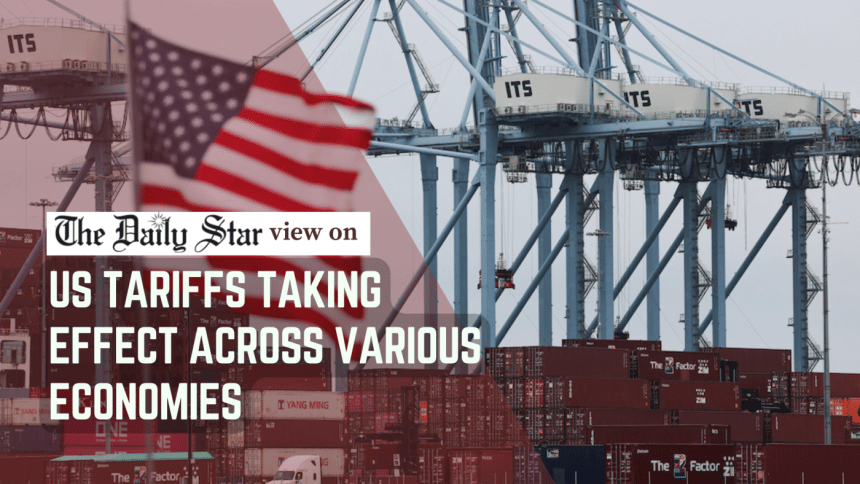A new and challenging phase in international trade has commenced. The United States has enforced a 20 percent tariff, escalating the total duty on Bangladesh’s crucial garment industry to a burdensome 36.5 percent. The primary export market has swiftly turned into a more costly realm. This development is not an isolated incident but part of a broader situation. The immediate effect is both abrupt and severe. Exporters are under significant pressure from American purchasers to absorb the added expenses within their already narrow profit margins, putting the competitiveness of our ready-made garments in jeopardy.
Nevertheless, this crisis also serves as a litmus test for the country’s resilience and a chance for the manufacturing sector to showcase its vigor. Both the government and industry leaders are confident that Bangladesh can endure this situation by capitalizing on its established reputation for bulk production and punctual delivery. However, moving forward cannot rely solely on hope but requires a composed approach. Continuous diplomatic efforts with Washington by the government are necessary to seek further discussions aimed at alleviating the tariff burden.
President Donald Trump’s trade policy decisions have led to the highest American import duties in a century, marking a new era of intense trade competition. Despite fervent last-minute appeals from various countries to avoid the tariffs, the increases were implemented. As a punitive measure against New Delhi’s persistent crude oil purchases from Moscow, the US administration has imposed an additional 25 percent tariff on India. This comes on top of an existing 25 percent duty imposed after the failure to reach a trade agreement by the August 1 deadline, resulting in a total tariff of 50 percent on Indian goods. The impact of this altered tariff landscape on Dhaka’s competitiveness remains uncertain.
A strategic shift is imperative for Bangladesh. Manufacturers must actively pursue diversification of their export markets, recognizing the risks of dependence on a single trading partner. This external thrust should be complemented by internal strengthening efforts, emphasizing the enhancement of the industry’s backward linkages as a crucial economic measure. The government should promote and incentivize innovation to support manufacturers in progressing towards more sophisticated and higher-margin products. Emphasizing sustainable and ethical manufacturing practices in this evolving global trade environment is paramount.
The dynamics of global trade have shifted significantly, potentially irreversibly. Successfully navigating this new terrain demands a careful and strategic approach from Bangladesh to secure future prosperity.

